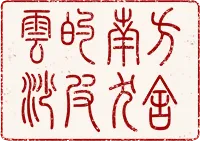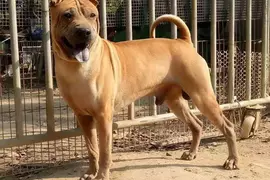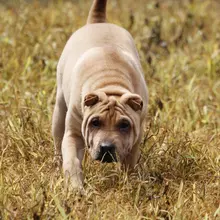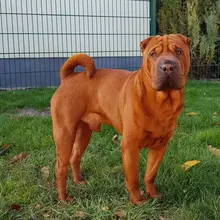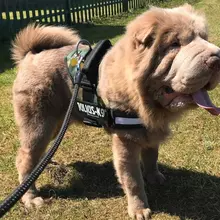The coat of the Shar Pei
The coat is the most important feature of the Shar Pei to differentiate it from other breeds. The coat even gave the breed its name. In Chinese, the breed is called ShaPi Gou, 沙皮狗 (sand skin dog).
Differences
When I first started my personal research about the Shar Pei, I was amazed that there were no good or accurate translations of the ancient Chinese descriptions. Matgo Law told me at that time that he always tried not to describe the breed using the ancient Chinese quotes and descriptions, believing that due to the very different cultures and concepts of different countries, these ancient Chinese terms could be misunderstood and give us a wrong understanding about the breed; or could be even misused to explain some faults in breed types. Although he described the correct Shar Pei coat for us in simple and understandable terms, I was always curious to find out more about the Chinese descriptions.
While the general idea to describe the coat of Shar Pei is very similar, there are some differences in definitions. In the West we like having categories like horsecoat, brushcoat and even bearcoat, Chinese have the same terms horsecoat and brushcoat and even the term bearcoat is used, but with a very different meaning.
Chinese categories
Chinese Shar Pei having a very short, harsh and prickly coat. The longest hair is on the dogs shoulder peak with around 1,5cm of length. This part is called brushcoat.
The coat is straight without undercoat and generally flatter on the limbs.
Our western brushcoat is generally described as bearcoat in China.
Texture
In his article about the Shar Peis coat texture from 2015, Matgo Law pointed out that the Shar Peis coat texture is the most important feature of the Shar Peis coat. It is very harsh, stiff and brisky. A texture that jabs your skin when running your hand over the coat.
In China there are even different nuances between these rough, bristly and prickly textures. There are insufficient words in our Western languages to correctly describe these different facets of the horse coat. The four most commonly described types of coat in China are the bristle coat, the bamboo coat, the betel nut coat, and a type of coat called "rotten comb".
Describing these four types of horsecoat precisely would certainly lead to further misunderstandings and misinterpretations. If you really want to learn and understand the different types of Chinese horsecoats, you have to travel to China and touch and look at a lot of dogs.
